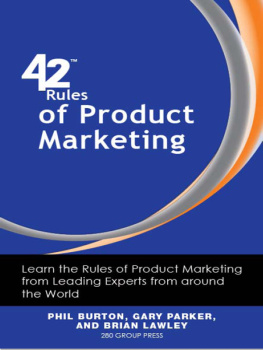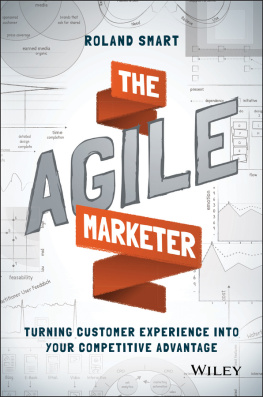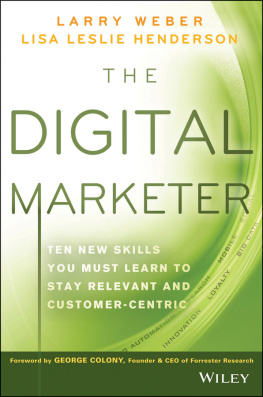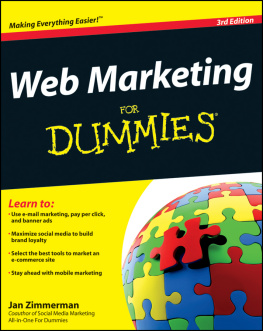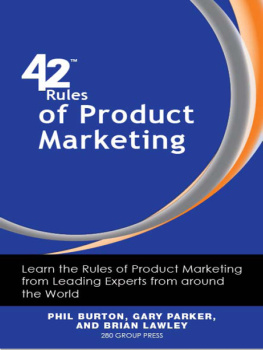HBR Press Quantity Sales Discounts
Harvard Business Review Press titles are available at significant quantity discounts when purchased in bulk for client gifts, sales promotions, and premiums. Special editions, including books with corporate logos, customized covers, and letters from the company or CEO printed in the front matter, as well as excerpts of existing books, can also be created in large quantities for special needs.
For details and discount information for both print and ebook formats, contact ,
tel. 800-988-0886, or www.hbr.org/bulksales.
Copyright 2016 SAS Institute Inc.
All rights reserved
No part of this publication may be reproduced, stored in or introduced into a retrieval system, or transmitted, in any form, or by any means (electronic, mechanical, photocopying, recording, or otherwise), without the prior permission of the publisher. Requests for permission should be directed to , or mailed to Permissions, Harvard Business School Publishing, 60 Harvard Way, Boston, Massachusetts 02163.
The web addresses referenced in this book were live and correct at the time of the book's publication but may be subject to change.
Library of Congress Cataloging-in-Publication Data
Names: Sweetwood, Adele, author.
Title: The analytical marketer : how to transform your marketing organization / Adele Sweetwood.
Description: Boston, Massachusetts: Harvard Business Review Press, [2016]
Identifiers: LCCN 2016016047 | ISBN 9781625278456 (hardco ver : alk. paper)
Subjects: LCSH: MarketingTechnological innovations. | MarketingManagement. | Quantitative research.
Classification: LCC HF5415.13 .S996 2016 | DDC 658.8/02dc23
LC record available at https://lccn.loc.gov/2016016047
ISBN: 9781625278456
eISBN: 9781625278463
This story would not have come to life without the people of SAS Americas Marketing & Support, more affectionately known as SAMS. This book is for and about SAMS, the organization that provided me with some of the most enriching experiences of my career.
I dedicate this book to SAMSfor always being present, for choosing the best attitude, for creating fun at work, and for making my day, every day.
CONTENTS
Reinventing the Marketing Organization in the Analytical Era
From Reactive to Proactive
From Silos to Convergence
From Traditional to Modern
From Responsive to Agile
What's NextYour Call to Action
FOREWORD
This excellent book is a clear-eyed, down-to-earth chronicle of one of the most significant changes taking place in business todaythe transformation of the marketing function.
The stereotypeand, to some degree, the realityof marketing in the latter half of the twentieth century is made clear in one of my favorite Dilbert cartoons. Dilbert looks with longing at a party the marketers are having (clearly, as an engineer, he hasn't been invited). Over the entrance to the party is a banner: Welcome to Marketing! Two drink minimum. Marketers were creative, improvisational, subjective, artistic, and (sometimes overly) sociable. Their focus was on persuading people to adopt products and services through advertising and promotions. Company outsiders in ad agencies and PR firms did much of the best work in the function. Since no one could measure the influence of print and TV advertising on sales, success was measured by industry awards rather than any financial results.
This picture began to change when direct mail and customer databases made some inroads into measurement and attribution in the latter decades of that century. However, the real revolution got underway with the Internet and World Wide Web around the turn of the twenty-first century. These technologies involved addressability, in that firms could know who they were addressing with marketing activities and what behaviors followed. For the first time, companies could extensively measure advertising, promotions, and marketingoriented contentwhether and how long recipients viewed them and what they did after. Because marketers could know who actually bought their products and services, they could do a much more effective job of qualifying leads. And that meant that they could and needed to work more closely with the sales function. In a decade or less, marketing functions could change their entire way of working and destroy old stereotypes.
And while marketers may be familiar with this transition at a general level, implementing this change in your own marketing organization is difficult and takes time. It's very useful to have a guide, to see this transition in detail, showing what works and what doesn't, within one organization that has been on the journey of change. In many respects, although the author references a handful of leading companies making the change, this book is an extended case study of the transformation of marketing at one company, SAS. As a result, the reader can learn the context behind the general changes in marketing. What, for example, does it mean to get executive buy-in for this transformation? What new roles and structures are needed? How will these activities affect marketing budgets? How does the culture of marketing get changed over time? All these topics are treated extensively in the book and provide a template for how other organizations might undergo similar changes.
While this story is about marketing at a vendor of analytics software, there are no aspects of the transformation of marketing at SAS that another company couldn't achieve. SAS does offer some of the software described (at a high level) in these pages, but certainly not all of it. No one would mistake this book for marketing messages about SAS software. The focus is on how to use data and analytics to market in a new way, and on the needed technical capabilities.
SAS is a software company, but that does not necessarily make it easier to undergo the type of transformation I've been describing. Some aspects of marketing transformation are even more difficult at SAS than at other types of firms. Specifically, that SAS's customers are primarily businesses makes customer analytics more difficult and complex to manage. Individual behaviors must be associated with a larger customer organization and interpreted for their impact on the broader customer relationship. Overall, it's fair to say that businessto- business marketers are generally less data- and analytics-oriented than are consumer marketers. So any organization should be capable of adopting the lessons laid out in this book.
Of course, the revolution described here is not finished. More transformational activities in marketing are coming, at SAS and elsewhere. For example, while human marketers will always be present, it's clear that there will be increasing automation in the function. I recently interviewed a member of Adele Sweetwood's marketing staff who is a bellwether of this particular change. His role is to drive certain aspects of digital marketing for SAS, including search engine optimization, digital ad buying, and video ads. Most of the decisions in his role are made by machines using algorithms developed by other machines. He implements and oversees the software for these semiautomated decisions and determines how well it is working. When it needs improvement, he makes adjustments. He is performing tasks that were never performed by humans; there is simply too much data to analyze too quickly for a human to do it. The cognitive technologies he employs are just a straightforward extension of conventional analytics, and SAS is already making some of these cognitive tools available to customers. We will see them increasingly used in marketing and elsewhere at SAS, and perhaps that will be an occasion for another book from Sweetwood. I can't wait to read that one, too.






